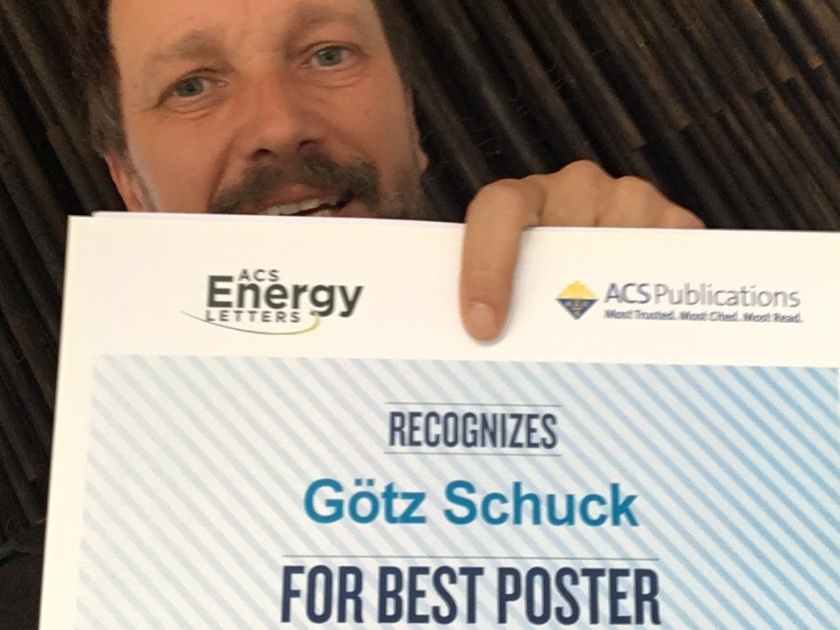Poster award for Götz Schuck

Dr. Götz Schuck was awarded a poster prize at the PSCO-19 © privat/HZB
At the 5th International Conference on Perovskite Solar Cells and Optoelectronics (PSCO-19) Dr. Götz Schuck received a prize for his poster contribution. The international conference took place from 30.09.2019 to 02.10.2019 in Lausanne, Switzerland.
Halide Perovskites are outstanding candidates for extremely efficient and yet cost-effective solar cells. In the most studied perovskite variant, the lattice sites of a perovskite structure are occupied by the halide element iodine, the metal lead and the organic molecule methylammonium. But what happens when iodine is replaced by chlorine?
Götz Schuck investigated this question using neutron scattering experiments and other methods. He presented the results on his poster titled "Influence of chloride substitution on the rotational dynamics of methylammonium in MAPb(I,Cl)3 perovskites".
"This award shows the high quality of Götz Schuck's research on the dynamic structure of halide perovskites", says Prof. Dr. Susan Schorr, head of the department Structure and Dynamics of Energy Materials. At the conference 150 posters have been presented, 7 of which were awarded with a poster prize.
red.
https://www.helmholtz-berlin.de/pubbin/news_seite?nid=20802;sprache=en
- Copy link
-
Battery research with the HZB X-ray microscope
New cathode materials are being developed to further increase the capacity of lithium batteries. Multilayer lithium-rich transition metal oxides (LRTMOs) offer particularly high energy density. However, their capacity decreases with each charging cycle due to structural and chemical changes. Using X-ray methods at BESSY II, teams from several Chinese research institutions have now investigated these changes for the first time with highest precision: at the unique X-ray microscope, they were able to observe morphological and structural developments on the nanometre scale and also clarify chemical changes.
-
BESSY II: New procedure for better thermoplastics
Bio-based thermoplastics are produced from renewable organic materials and can be recycled after use. Their resilience can be improved by blending bio-based thermoplastics with other thermoplastics. However, the interface between the materials in these blends sometimes requires enhancement to achieve optimal properties. A team from the Eindhoven University of Technology in the Netherlands has now investigated at BESSY II how a new process enables thermoplastic blends with a high interfacial strength to be made from two base materials: Images taken at the new nano station of the IRIS beamline showed that nanocrystalline layers form during the process, which increase material performance.
-
Martin Keller elected new president of the Helmholtz Association
The Helmholtz Association has appointed internationally respected US-based scientist Martin Keller as its new president. Her has lived in the United States for nearly three decades, during which he has held various scientific leadership roles at prominent institutions. Since 2015, Keller has directed the National Renewable Energy Laboratory (NREL) in Golden, Colorado. His term begins on 1.11. 2025.
